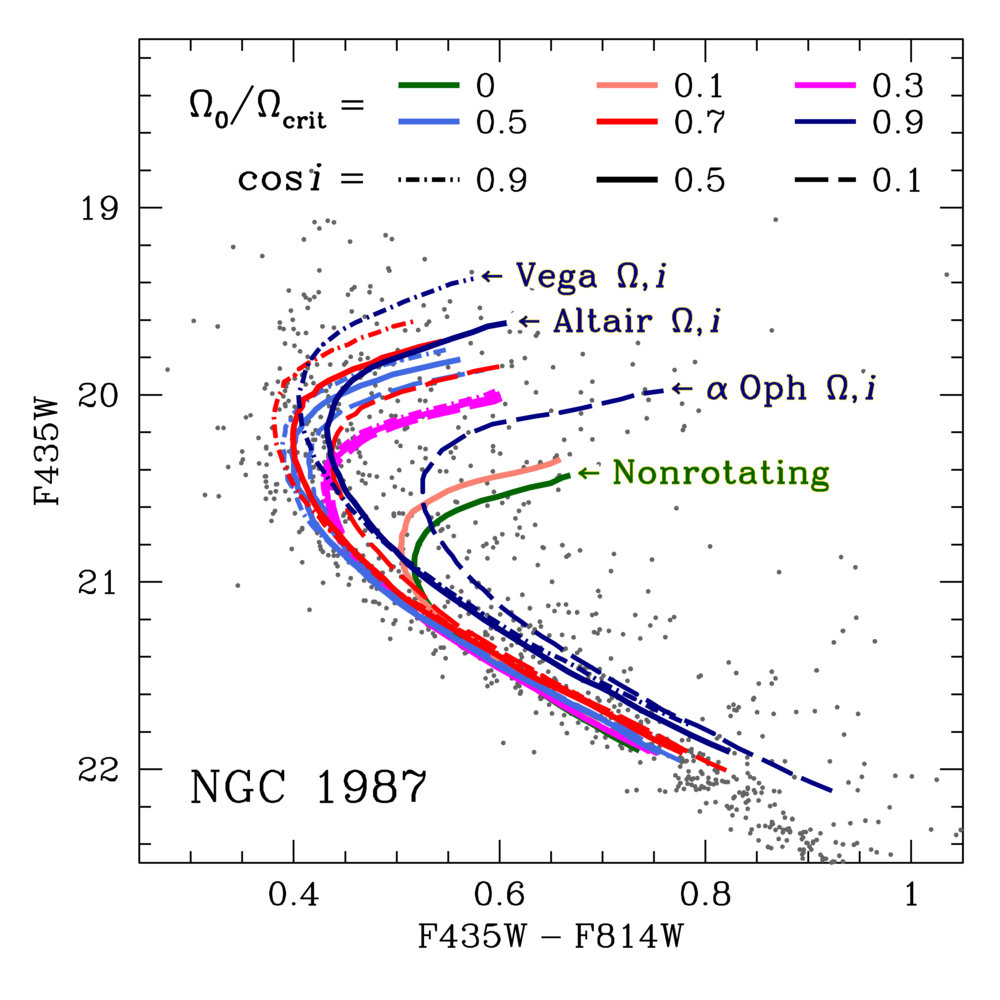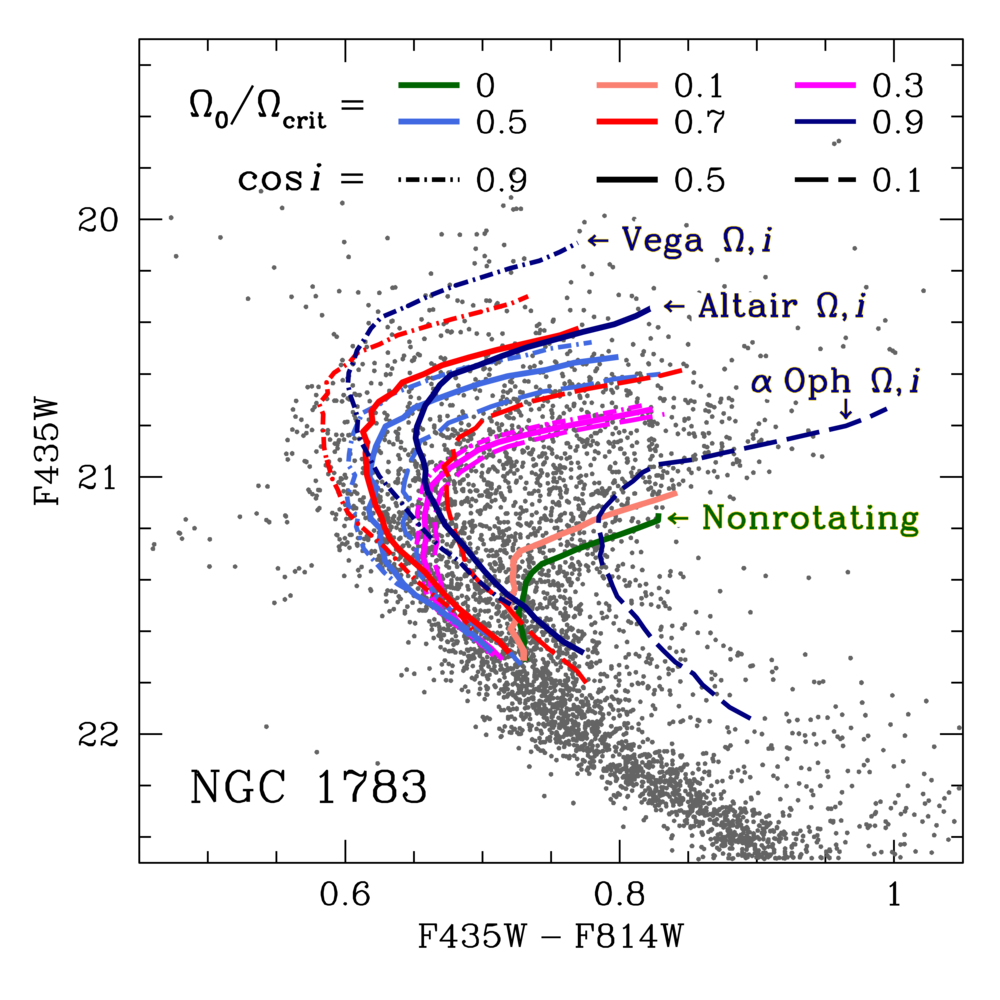Stellar Evolution
The basics of stellar evolution have long been understood, but many details still matter. A major example of this is stellar rotation. Stars above about 1.5 Solar masses have convective cores and radiative outer regions; they do not generate strong magnetic fields like the Sun does. The Sun's magnetic field couples it to the Solar wind; the Sun gradually spins down as the wind expands and takes its angular momentum. More massive stars, like Vega and Altair (each is around 2 Solar masses), can spin very close to the critical value, with huge shape distortions. We see Vega pole-on. If Vega were edge-on, it would appear just half as bright!
Rapid rotation mixes additional material into the convective cores of relatively massive stars. This gives them extra fuel and allows them to shine longer and brighter. This tool uses new models of rotating stars, together with a proper treament of orientation effects, to infer basic stellar parameters. Because adding in rotation makes stars longer lived, these new models indicate that we may have underestimated the ages of some nearby star clusters, like the Hyades and Praesepe.
A range of stellar rotation rates and orientations can have a dramatic effect on the color-magnitude diagram. Color-magnitude diagrams have been used to understand stellar populations for almost a century. Rotation appears to be the best candidate to explain so-called extended main-sequence turnoffs. These are otherwise only explicable by a range of ages, with clusters forming stars in several bursts. No star cluster has ever been caught in the act of forming a new burst of stars long after its initial population. The figures below show some examples of these extended turnoffs from the Large Magellanic Cloud, together with stellar populations of a single age and composition, but with different rotation rates and orientations.

